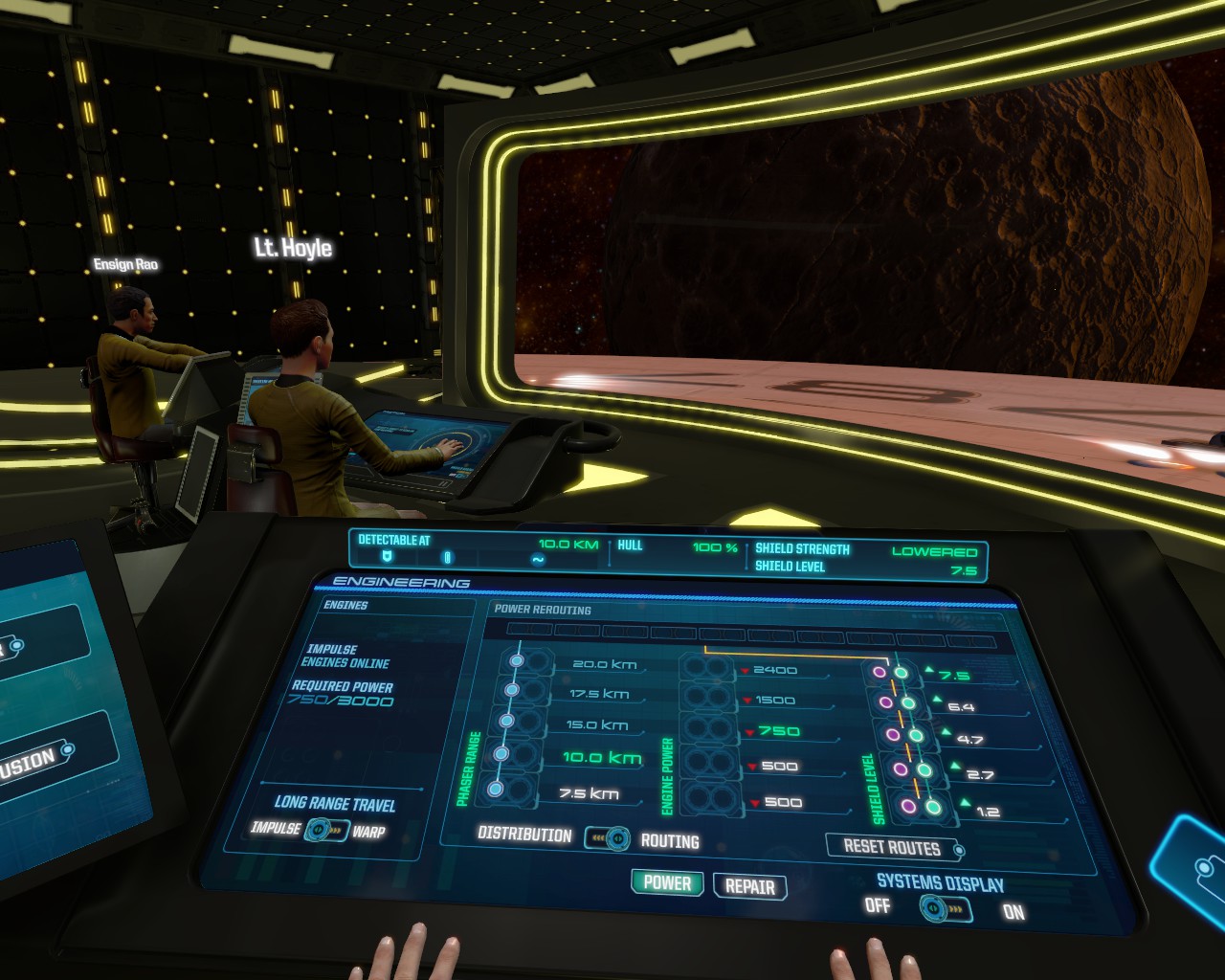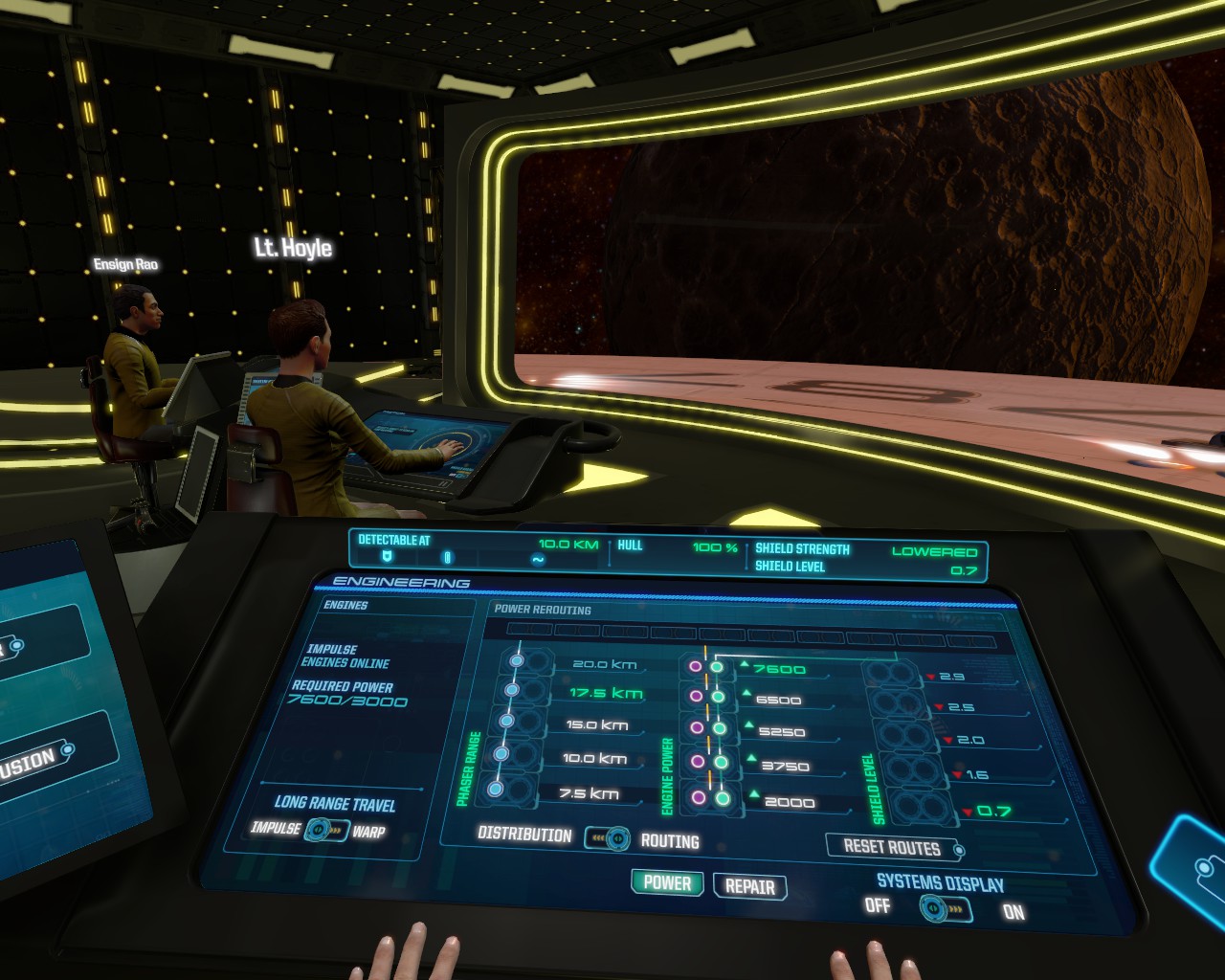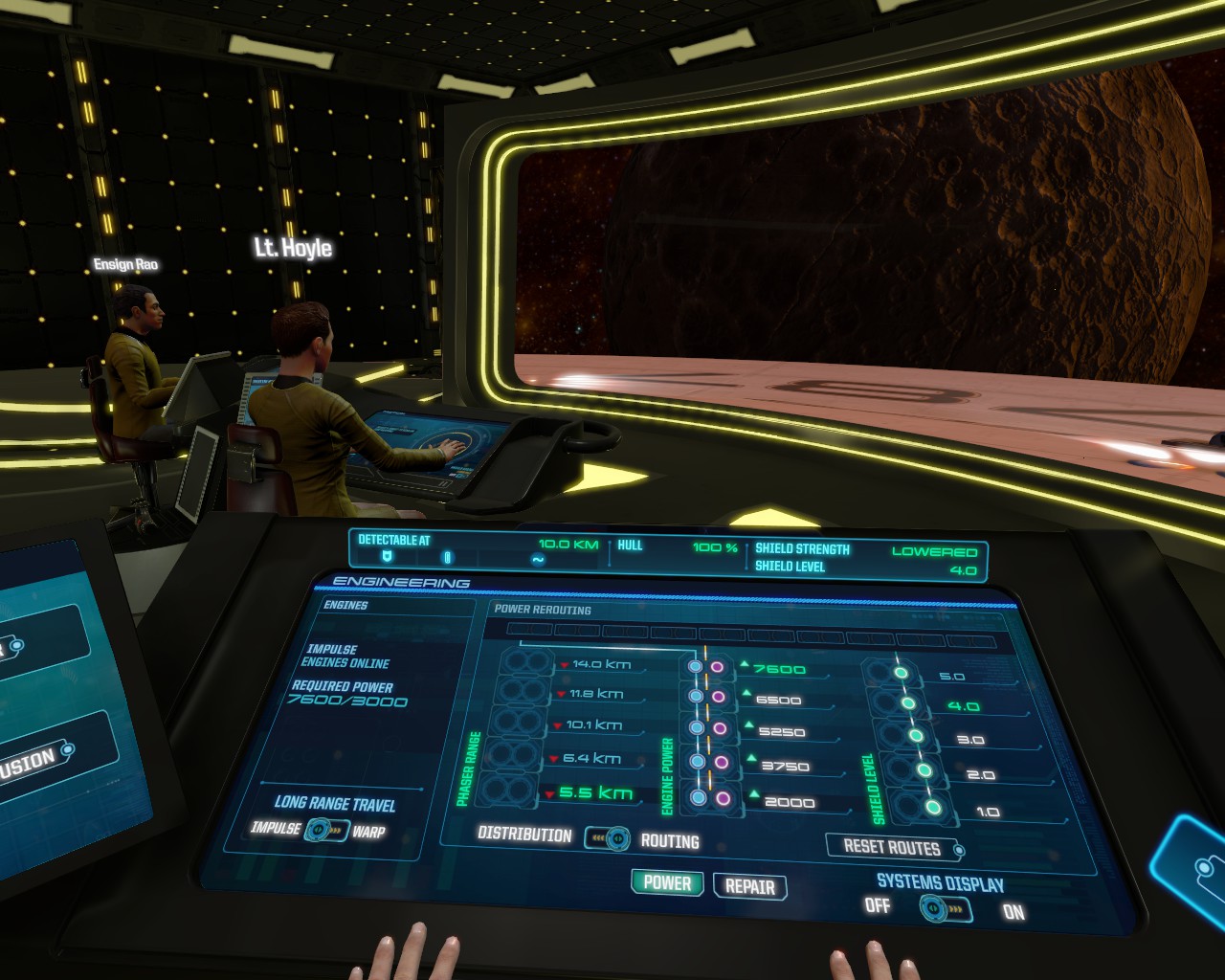A list of efficient power allocation & rerouting patterns and their names.
Introduction
Names of patterns were created with a sole purpose of being efficient at a cost of beforehand memorisation. They do not represent most role-play or Star Trek canon-friendly names.
The logic of pattern names:
1) Shortening of Main Subsystem Power names will allow for a faster issuing of orders and minimisation of order mishearing accidents :
“Phaser Range” is shortened to “P”.
“Shield Level” is shortened to “S”.
“Engine Power” is shortened to “N”. *
*Letter “E” [ i ] is not used for “Engine Power” shortening because it is inevitably used as a sound in pronouciation of a letter “P” [ p i: ] which can lead to mishearing confusion.
2) When ordering a pattern the priority goes to the Main Subsystem that was called out first. Secondery Power priority goes to the Main Subsystem that was called out second.
3) An “-R” letter at the end of a pattern name indicates an order to use unstable rerouting pattern for overload of a Main Subsystem that was prioritised above others with metigation of power loss to the Main Subsystem that was set to second priority.
Patterns Based on Phaser Range
Pattern “P”

Pattern “P S”

Patterns “P -R” & “P S -R”

Due to inefficiency of having additional hollow power node in Engine Power it is advised to re-allocate it ito Shield Level. Which turns pattern “P -R” into “P S -R”.
Pattern “P N”

Pattern “P N -R”

Patterns Based on Shield Level
Pattern “S”

Pattern “S -R”

Pattern “S P” [Inefficient]

Pattern “S P” is proven Inefficient when compared to pattern “P S”. Which accoplishes to provide better Phaser Range without a power loss of other Main Subsystems.
Pattern “S P -R”

Pattern “S N”

Same result achieved by the pattern “N S”.
Pattern “S N -R”

Pattern “N”

Pattern “N -R”

Pattern “N P” [Inefficient]

Pattern “N P” is proven Inefficient when compared to pattern “P N”. Which accoplishes to provide better Phaser Range without a power loss of other Main Subsystems.
Pattern “N P -R”

Pattern “N S”

Same result achieved by the pattern “S N”.
Pattern “N S -R”


